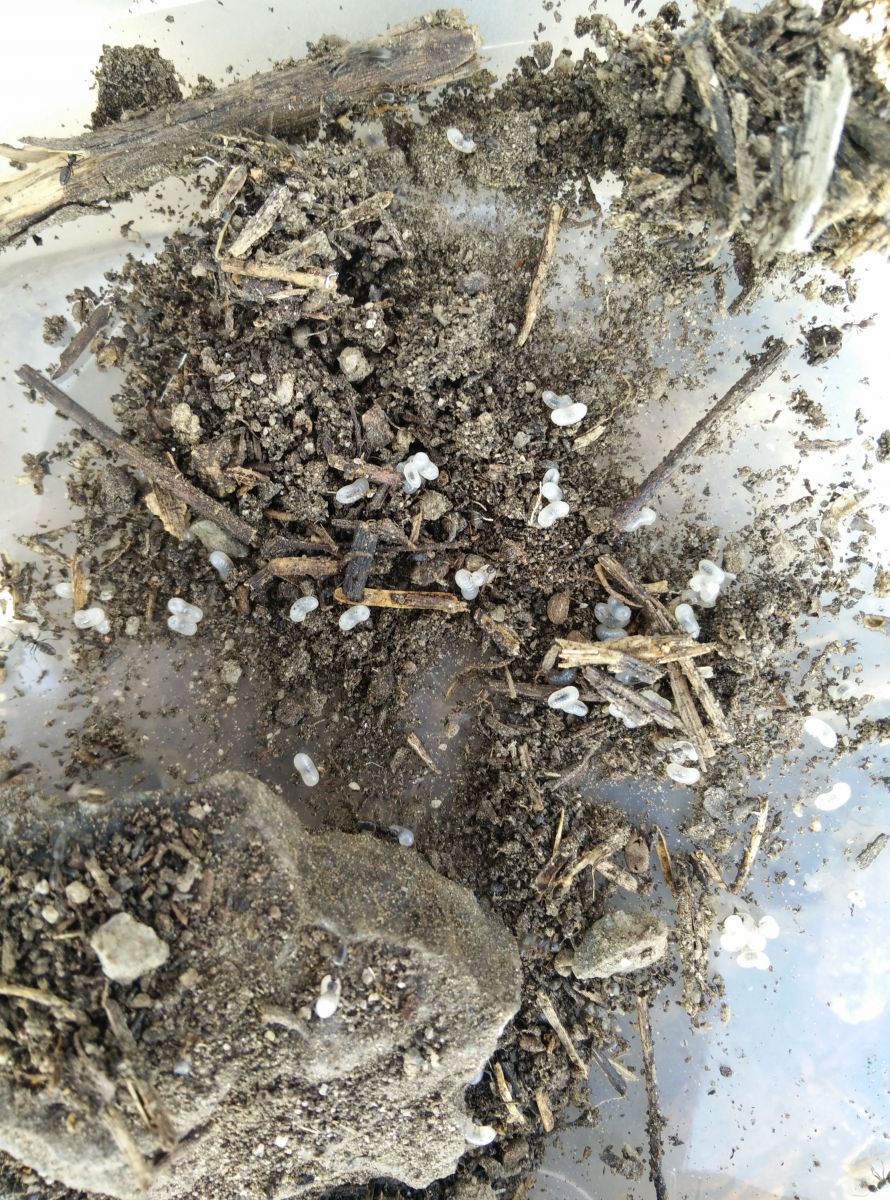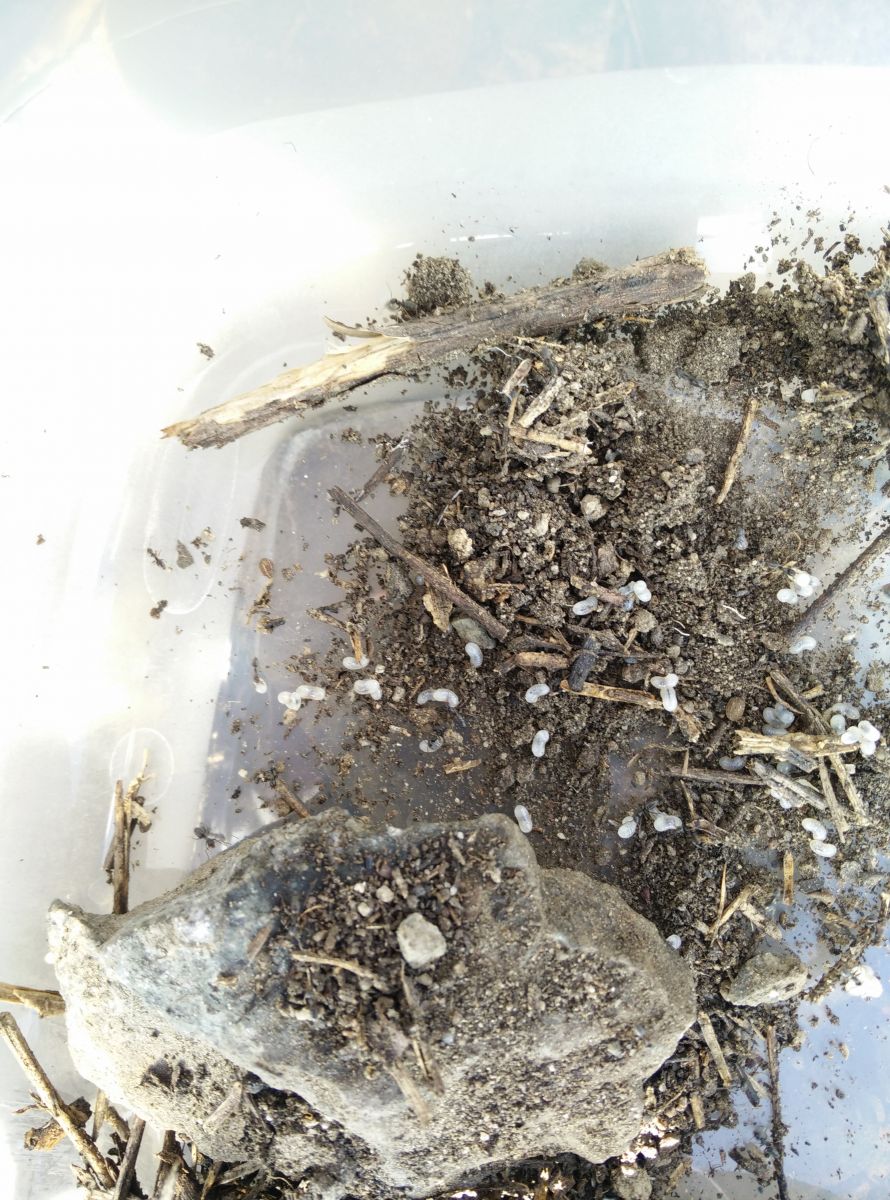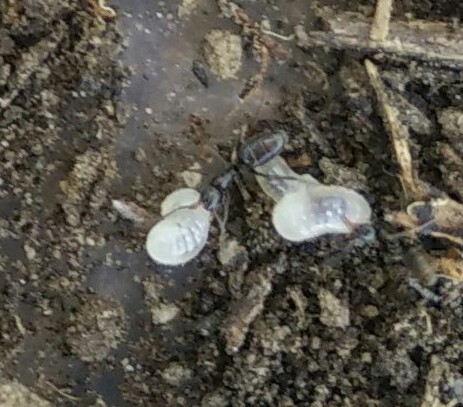I headed out to the trail drew and kellakk visited a few weeks ago to see what I could find. No queens, but lots of colonies right on the trail. This was all in Chino Hills Regional Park
Habitat: Bare dirt
Length: ~5mm
Color, hue, pattern and texture: Red head and thorax
Distinguishing characteristics: ---
Anything else distinctive: ---
Nest description: Normal Pogonomyrmex mound/hole
Is it possible to tell from pictures alone what Pogonomyrmex species these might be? Are rugosus always darker red (unlike these)?
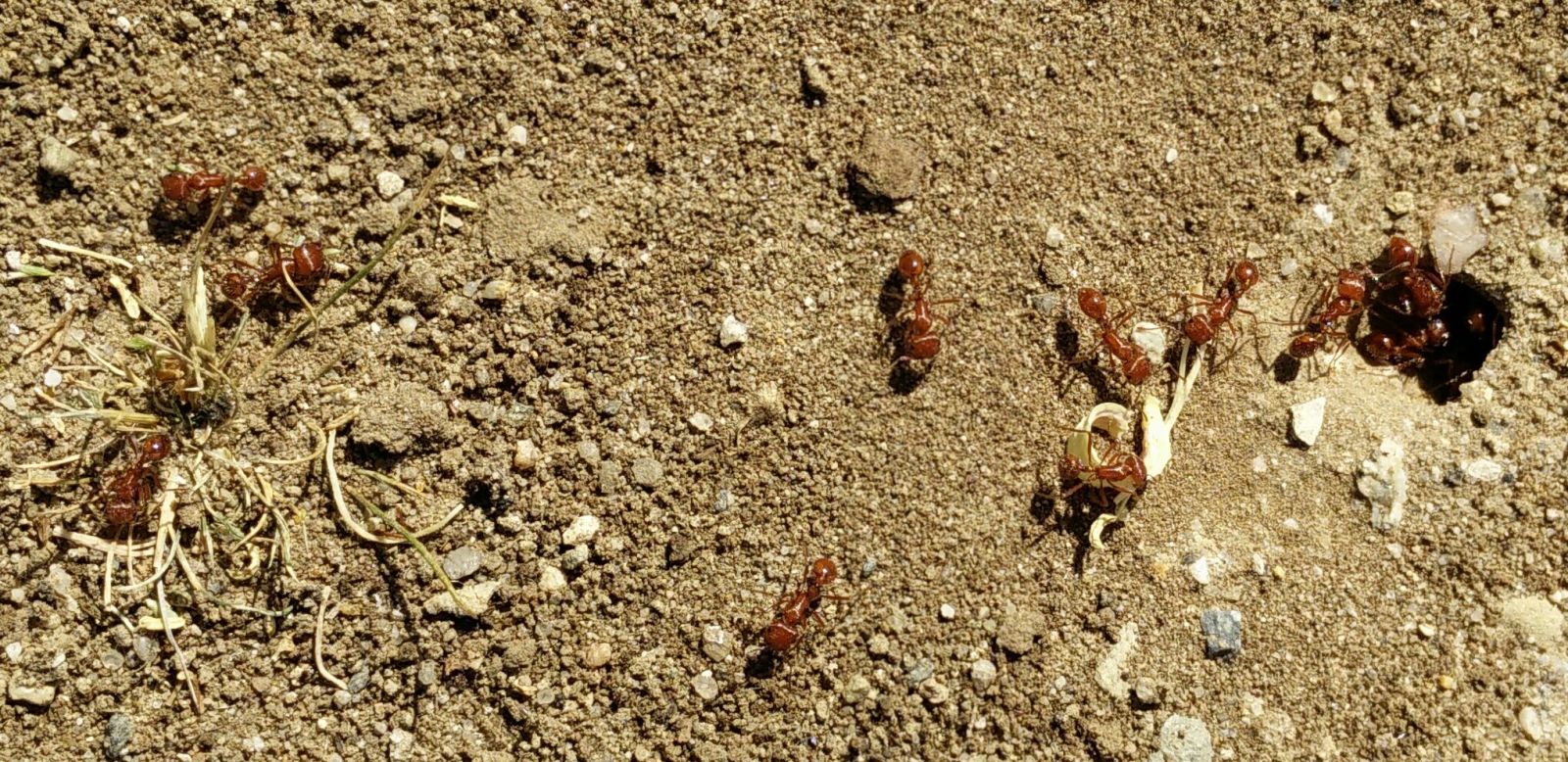
Habitat: Scrub
Length: ~1mm
Color, hue, pattern and texture: Yellow
Distinguishing characteristics: ---
Anything else distinctive: ---
Nest description: Small sandy mounds, multiple mounds in small areas.
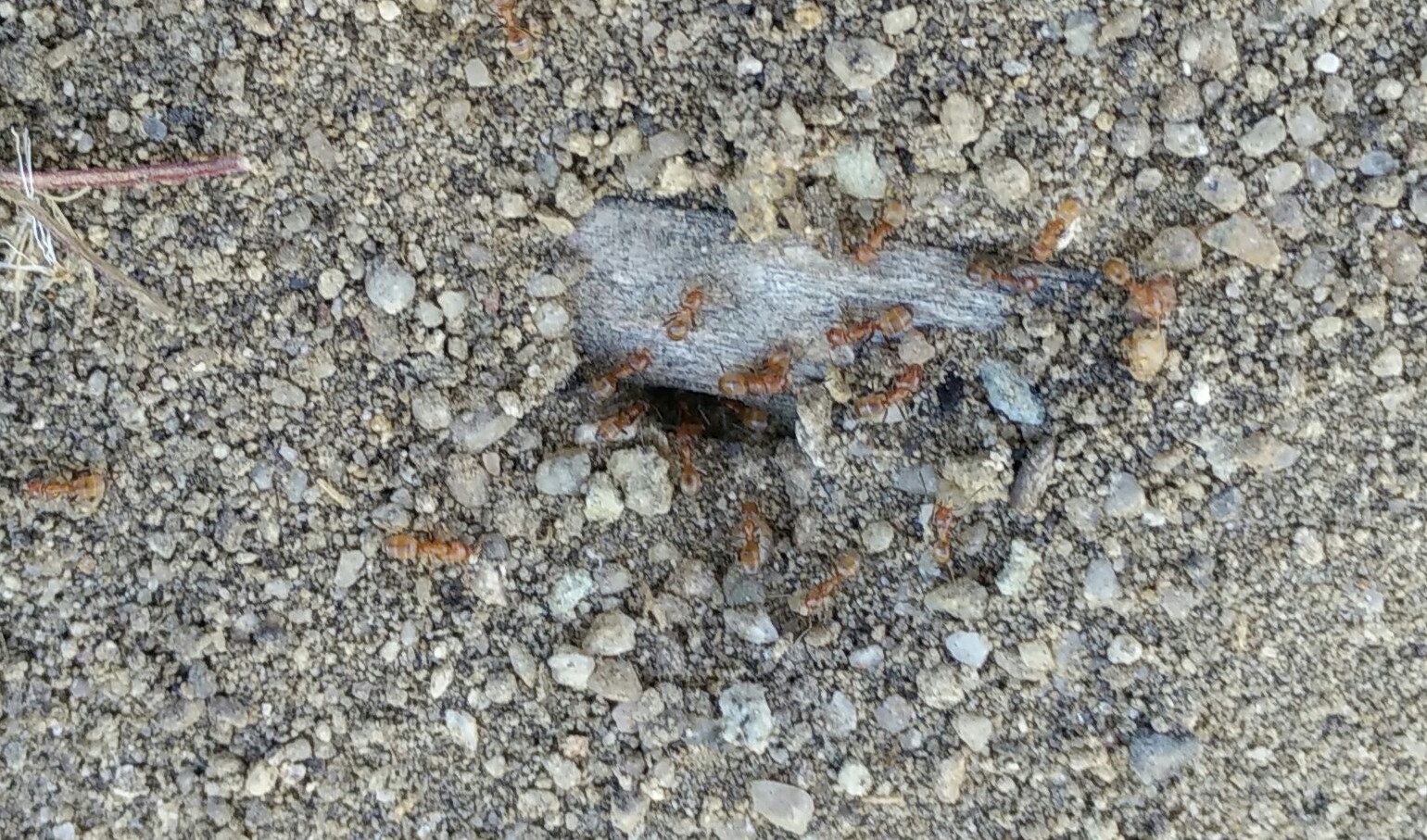
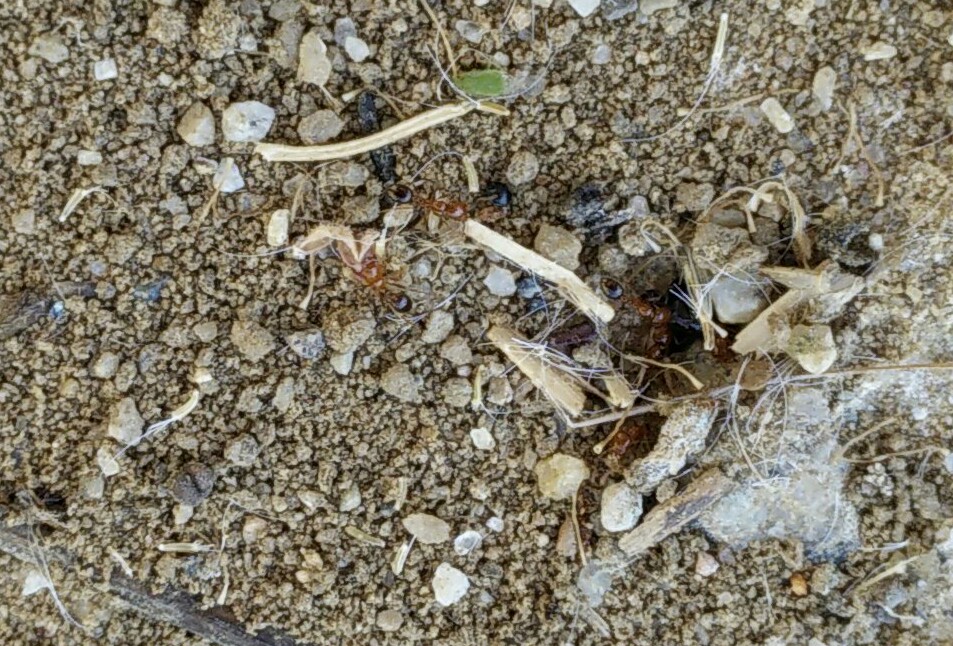
Length: ~5mm
Color, hue, pattern and texture: Black
Distinguishing characteristics: HUGE larvae (alates?)
Anything else distinctive: ---
Nest description: Underneath a rock, appears nest goes deeper into rocks
